Contents


We love melon for its marvelous aroma, honey sweetness of a ripe fruit. If suddenly bitterness remains in the mouth after it, then this is a sure sign that the fruit is spoiled, it cannot be eaten. But there is a completely different plant, whose fruits are called “bitter melon.” It has edible young shoots, leaves, fruit pulp and seeds. All parts of beautiful ornamental fruits have medicinal value and are actively used by folk medicine. What is bitter melon?
Possible reasons
When we buy a small round local melon or a long Central Asian melon with a breathtaking aroma, we expect a feast of sweet taste in our mouths. If instead we feel bitterness, then something is wrong with this melon.
Most often, the reason is that the fetus could be affected by fungal infections, after which an unpleasant taste appears in the mouth. The increased content of nitrates will also not make the pulp sweeter. To avoid such troubles, you need to carefully consider the fruits when buying and do not take those whose skin is damaged. Remember that cracks are an open road for infections and bacteria, and a bitter taste in the mouth helps us stop in time.

But “bitter melon” is a completely different plant, it is also called Indian cucumber or Chinese melon. This very beautiful liana from the pumpkin family is represented by 20 species known today, among which there are annual and perennial plants. But two of them are most often cultivated: momordica charantia (from the Latin name) and Cochin.
They came to us from the Indian tropics, the Chinese south and the Caribbean islands, where their wild counterparts grow. Despite its southern origin, the “bitter melon” has taken root in our dachas and household plots. Some were captivated by the beauty of the plant, especially bright exotic fruits, others liked the unusual dishes from them, and others are pinning their hopes on amazing medicinal properties.
Thin shoots grow up to 4 meters, they are strong enough to hold large carved bright green leaves. Yellow flowers bloom in turn – first male with a pleasant sweet smell, then female. Almost immediately after pollination, ovaries are formed, large green fruits grow, similar to warty cucumbers, as they ripen, they become yellow-orange in color.
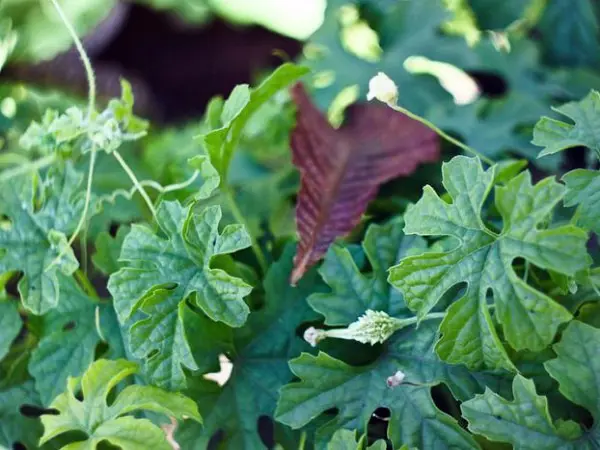
Summer residents appreciate momordica for its decorative effect: any fence can be decorated by running a liana along it with large beautifully outlined leaves of rich green color, with fruits up to 25 cm long, which, when ripe, turn from green to bright orange. Interestingly, until the very ripening of the fruits, the branches are covered with stinging hairs, which for some reason completely disappear after the fruits ripen. Ripe fruits open, the skin with a thin layer of pulp is divided into three parts, which are wrapped up, becoming like huge bright three-lobed flowers. Up to 30 seeds are poured out of each fruit, covered with dark red dense skin with pulp (like large pomegranate seeds), after biting which bitterness is felt in the mouth.
This plant is very beautiful, it strikes with its tropical brightness in the midst of our reserved nature. In this culture, everything is beautiful and unusual for our eyes, even seeds. Oddly enough, it is very easy to grow. It feels great not only in greenhouses, but also in the open air, you can put it on the balcony and even on the windowsill. True, there is one caveat – in a short summer it is not always possible to get ripened fruits, which is why many grow it through seedlings.
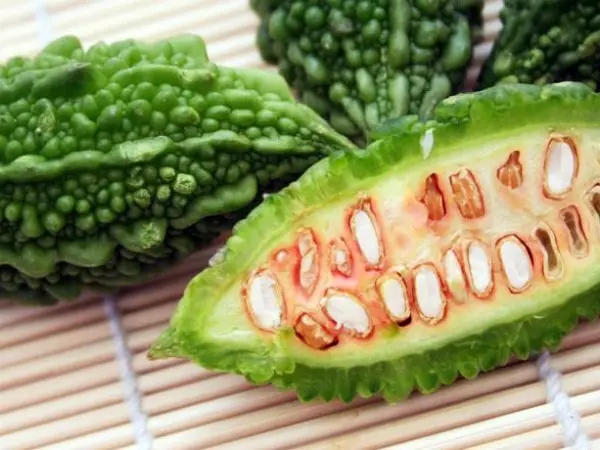
The chemical composition of bitter melon
“Bitter melon” is able to amaze not only with its spectacular appearance, but also with its changing taste. And the chemical composition of the fruits will outdo the most useful and nutritious vegetables in our garden. Momordica contains:
- more proteins, carbohydrates, dietary fiber and sugars than eggplant and bell peppers;
- more beta-carotene than broccoli;
- twice as much calcium as the notorious spinach;
- more potassium than a banana.
In addition, bitter melon still has a lot of iron, magnesium, zinc and phosphorus, folic acid, which is so necessary for the bone marrow. Vitamins are better selected than in any multivitamin complex: groups B – for the nervous system, E – against aging, C and F – for strength and vigor. And all this can be obtained from one plant! Only here it is not always pleasant to eat because of bitterness. Moreover, the more ripe the fruit, the more bitter its pulp in the mouth.
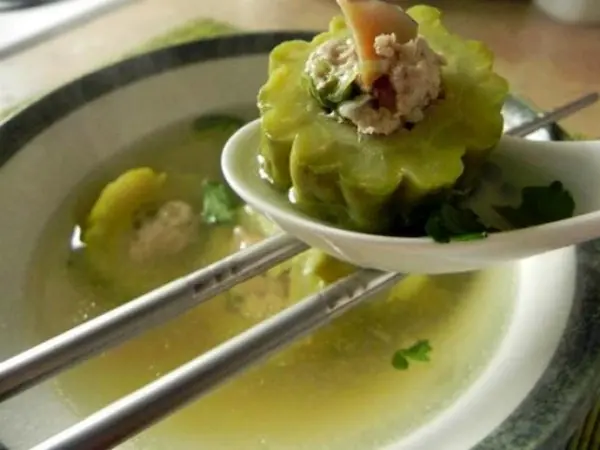
Unripe fruits are crisp and juicy, like a green cucumber or bell pepper. The seeds are removed from them before cooking. The pulp of unripe fruits is eaten raw, canned, boiled and fried. They use recipes from Chinese, Indian, Indonesian, Vietnamese cuisines. It is interesting and pleasant to eat momordica with yogurt, meat or potatoes, to include in vegetable stews. For us, these are unusual exotic dishes. That’s why it’s interesting to try them. For example, the Okinawan cuisine of Japan offers dishes that simply melt in your mouth.
Ripe momordica leaves behind a very bitter taste, so it is more often used in traditional medicine than in cooking.
The use of fruits and seeds, due to their amazing chemical composition, has a healing effect on the entire body. They help cleanse and strengthen blood vessels, stimulate the work of the heart, liver, kidneys, pancreas, strengthen the immune system and the body’s resistance to infectious diseases.
Many saw in this plant a panacea for all diseases, which cannot but alert. It is known that it can cause poisoning in children, worsen the condition of patients with ulcers of the digestive system. The long-term use of momordica by Tibetan, Chinese or Japanese folk medicine should not contribute to its uncontrolled use in our reality – everything must be approached rationally and carefully.
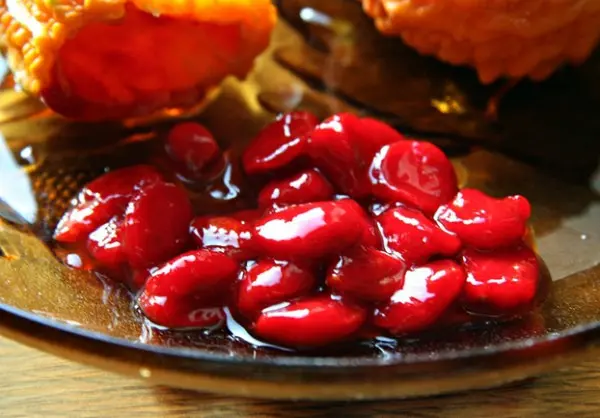
Proper melon care
Chinese melon is not difficult to grow in temperate climates. It is propagated by seeds and cuttings.
Most often, seeds are used to grow annual plants through seedlings. The darkest ones are selected from them, they are disinfected with potassium permanganate, after which they are placed on a damp cloth smeared with honey, left near the central heating battery. After 2 weeks, germinated seeds are planted in peat cups. Leaf soil is mixed with humus, heated for disinfection, the seeds are slightly pressed into it with the rib down, covered with heated sand from above. Crops create a greenhouse effect with a temperature not lower than +20 degrees and high humidity. After a couple of weeks, cups with sprouted seedlings can be opened. Then it is watered, fed with potassium-phosphorus fertilizers, hardened, and at the end of May they are planted outside.
The plant needs to pick up a dry, bright place with light nutrient soil, prepare supports for the vine. As the plant grows, thin out so that the leaves and new shoots do not obscure each other, otherwise this will negatively affect the yield.
When working with a plant, hands must be protected, otherwise its burning hairs leave burns after contact.
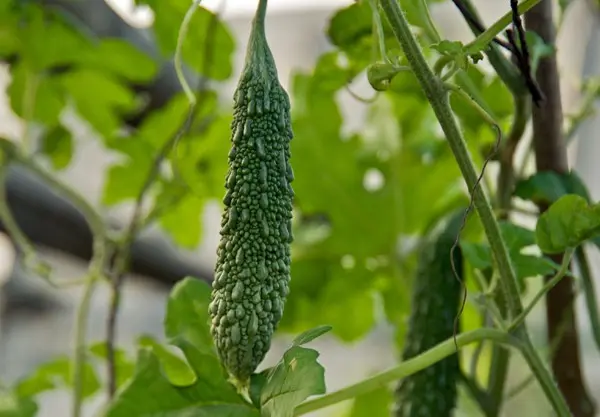
This tropical beauty loves moisture, but does not tolerate stagnant water at the roots. In the middle of a hot summer, it is watered daily, preferably in the evening, and in the morning it is worth slightly loosening the soil. It is sprinkled as it is washed out. Feed the vine with complex mineral fertilizers after 3 weeks, you can use a liquid solution of a mixture of cow manure with chicken manure.
Among the diseases you need to be wary of gray rot, bacteriosis, powdery mildew. Can pester aphids. If such troubles happen, colloidal sulfur gives a good effect, the affected plants are sprayed with it, diluting 40 g in 10 liters of water. Plants are also powdered with wood ash.
For food, the fruits are harvested about 10 days after the formation of the ovary – they have already grown, but not yet ripe, the skin has turned yellow, but has not yet become orange. If you wait a couple more days, the fruit will become very bitter, and eating it will be accompanied by unpleasant sensations in the mouth.
Momordica is easy to grow. Caring for her can be a pleasure. It will decorate the summer cottage and even improve health. But before eating this exotic plant, you should carefully study the issue and try only a small portion. It is undesirable to give it to children.
Video “Growing momordica”
This video features momordica charantia and how it is cultivated in the garden.









